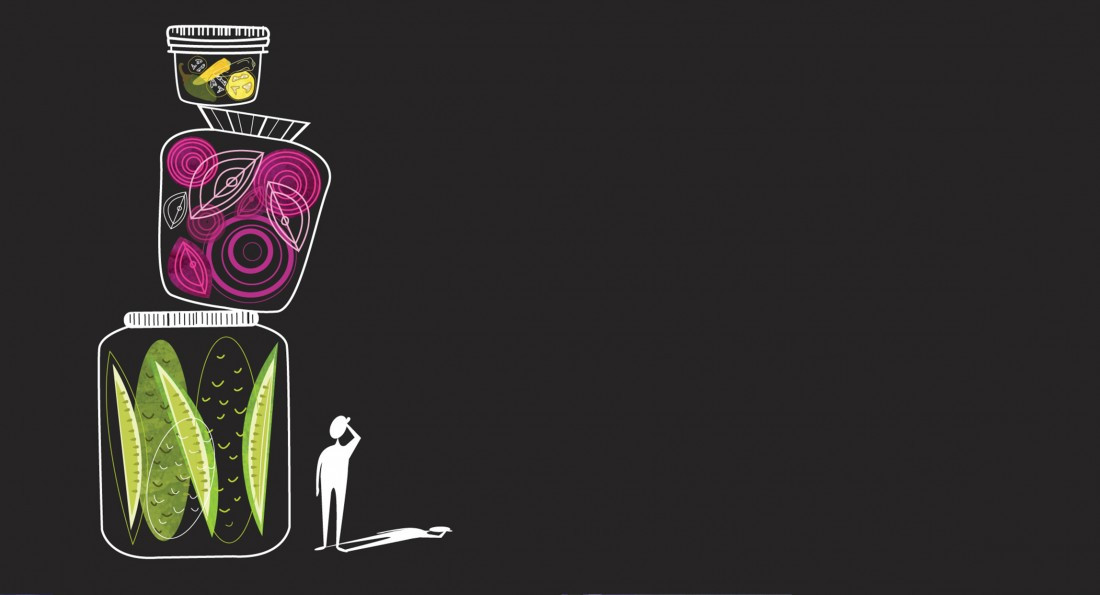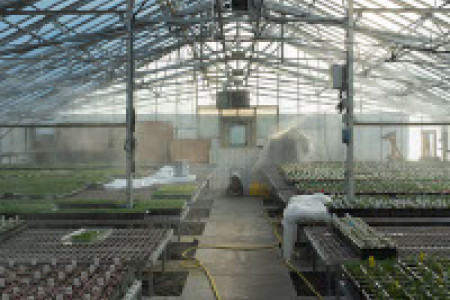Preserving the harvest
Enjoy summer’s produce through the winter
People overwhelmed by their edible garden’s output have several options for keeping the produce good all winter long.
Megan Klassen-Wiebe, founding member of Metanoia Farmers, often preserves her cast-off vegetables and those too ugly for market or Community Shared Agriculture (CSA) boxes (weekly installments of local farm produce) to reduce waste.
“Last year, we grew turnips, and they developed root maggots, but I decided that I wanted to salvage them,” she says. “So, I spent several evenings picking out all the root maggots from every single turnip in order to pickle them.”
Klassen-Wiebe often needs to process large quantities of vegetables quickly and, for that, she recommends freezing over canning.
“Tomatoes you can just chuck in a freezer bag after washing them to then use throughout the winter in sauces and soups. Coming out of the freezer, let them thaw a little bit, and the skins will slip off. Kale can also be thrown into the freezer without much prep. Usually I just wash, chop and put it into bags.”
For those set on canning, she advises beginners to test it out before preserving all their produce.
“Don’t be afraid to make small batches. Start slow, make three jars, test the recipe out. Or find a friend who has preserved before and split the jars at the end of it.”
Rachel Isaak, kitchen manager at Sam’s Place, says she does much of her own preserving, because she’s a stickler for quality.
She hates the idea of working with unknown ingredients and chemicals in food, so growing edibles onsite and preparing everything from scratch is a way of controlling the outcome.
“Because you are eating your own preserves, you know exactly what is in your food,” she says. “Plus you are cutting down on waste: the waste in creating the food and the environmental waste in transporting it to your door.”
Her pantry staples include pickled vegetables and soup, which is great for using a large quantity of vegetables at one time and can be frozen or pressure canned.
Isaak says people tend to stop eating vegetables when the plants start going to seed, but those can be delicious in their own right.
“Lettuce that is more mature, going to seed, getting a little bitter - don’t toss it out. Wilt it! Add it to soup or as a layer in lasagna. Just because the plants are changing doesn’t mean they aren’t still great to use.”
Natalie Dyck, one half of the fermentation duo Edible Alchemy, says her go-to preserving method is fermenting in a basic brine, as it is a good way to begin to understand the vegetable itself and the process by which it breaks down.
“Sometimes, if you are making a really complicated mixture of things, it is harder to understand the technique and type of transformation that is happening or to appreciate one flavour,” she says.
Last year, Dyck tossed a bunch of jalapeños into a jar, covered them in salty brine and weighed down the mixture so it wasn’t exposed to air. This summer, she started pureeing them into hot sauce.
She also says sauerkraut is a great option, as it is easy to throw together and takes anywhere from two weeks to three months to ferment.
With so many different ways to preserve, keeping the fall harvest safe to eat all winter shouldn’t be a problem.
Published in Volume 71, Number 3 of The Uniter (September 22, 2016)






